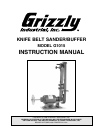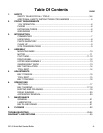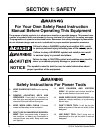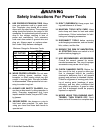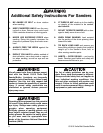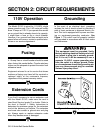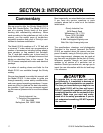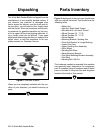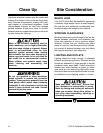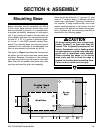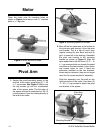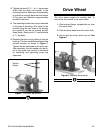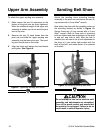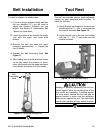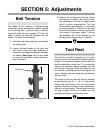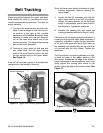
-9- G1015 Knife Belt Sander/Buffer
Clean Up
BENCH LOAD
Your G1015 Knife Belt Sander/Buffer represents
a relatively large weight load in a small footprint.
Be sure that your workbench is adequately rein-
forced to support the weight of the machine.
WORKING CLEARANCES
Working clearances can be thought of as the dis-
tances between machines and obstacles that
allow safe operation of every machine without
limitation. Ensure that your working area offers
plenty of room for free movement and a substan-
tial amount of distance between you and others
that may be working in your shop area.
LIGHTING AND OUTLETS
Lighting should be bright enough to eliminate
shadow and prevent eye strain. Electrical circuits
should be dedicated or large enough to handle
combined motor amp loads. Outlets should be
located near each machine so power or exten-
sion cords are not obstructing high-traffic areas.
Be sure to observe local electrical codes for prop-
er installation of new lighting, outlets, or circuits.
Make your shop “child safe”. Ensure that
your workplace is inaccessible to young-
sters by closing and locking all entrances
when you are away. Never allow visitors in
your shop when assembling, adjusting or
operating equipment.
Site Consideration
Unpainted machine surfaces may be coated with
a waxy oil to protect it from corrosion during ship-
ment. Remove this protective coating with a sol-
vent cleaner or citrus-based degreaser. Avoid
chlorine-based solvents as they may damage
painted surfaces should they come in contact.
Always follow the usage instructions on the prod-
uct you choose for clean up.
Many of the solvents commonly used to
clean machinery can be highly flammable,
and toxic when inhaled or ingested. Always
work in well-ventilated areas far from
potential ignition sources when dealing
with solvents. Use care when disposing of
waste rags and towels to be sure they do
not create fire or environmental hazards.
Keep children and animals safely away
when cleaning and assembling this
machine.
Do not use gasoline or other petroleum-
based solvents to remove this protective
coating. These products generally have low
flash points which makes them extremely
flammable. A risk of explosion and burning
exists if these products are used. Serious
personal injury may occur.



